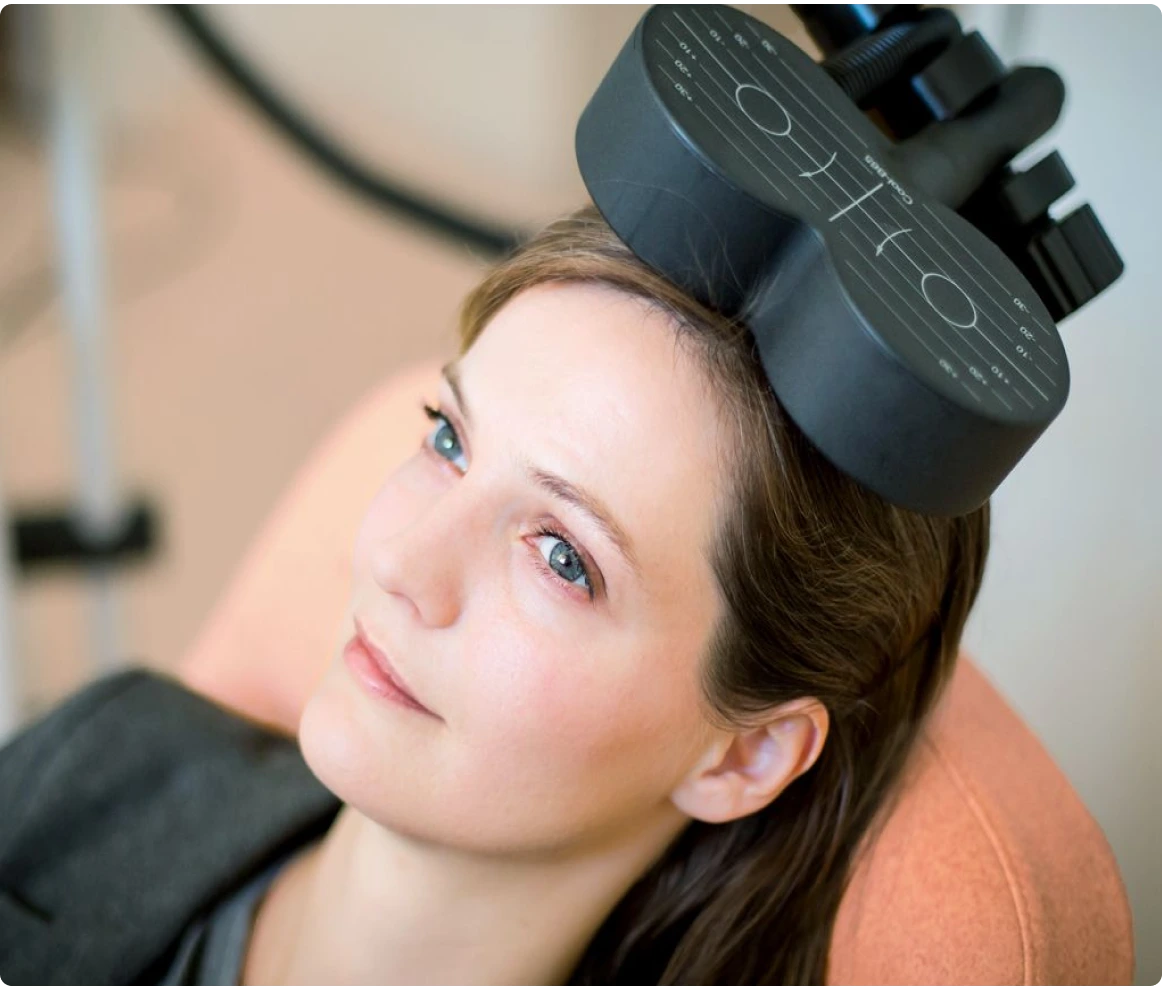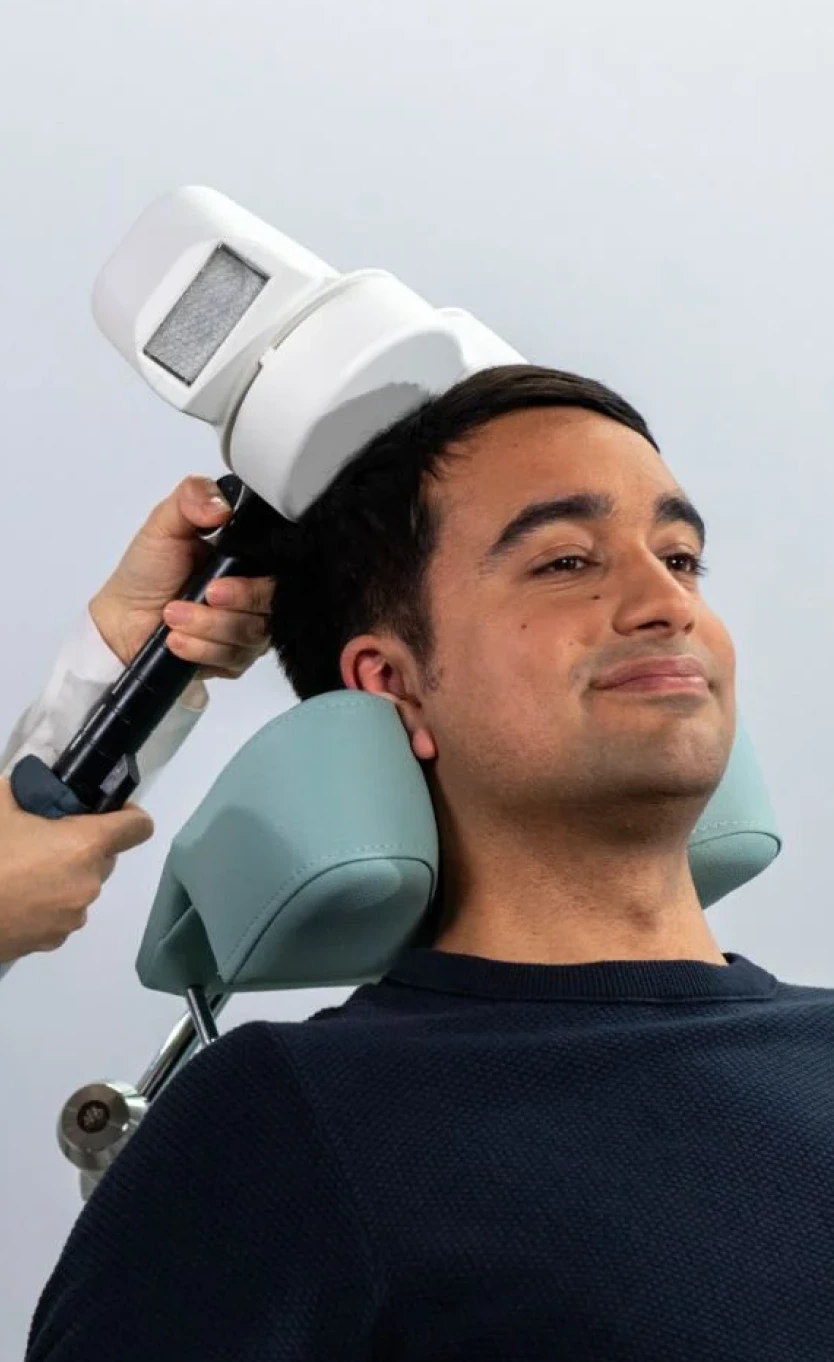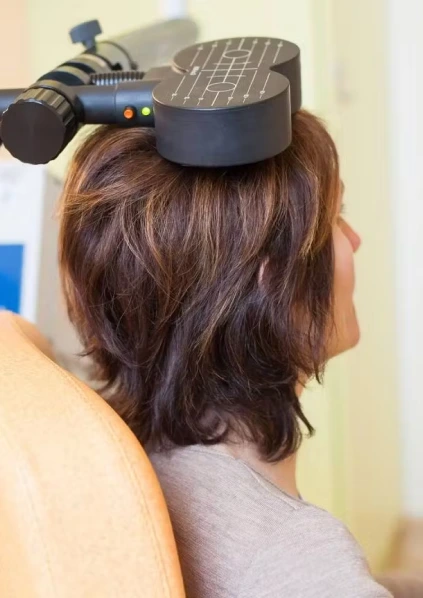If you’re considering transcranial magnetic stimulation (TMS) as a treatment option, one of the first questions you might have is how long it takes to see results. Practice shows that the timeline may vary from one day to more than six weeks, depending on the patient’s characteristics. Therefore, understanding what to expect can help set realistic goals and guide you through the process. In this post, we’ll explore the standard treatment regimens for different types of TMS and analyze the factors influencing how quickly this therapy works.
If you’re considering transcranial magnetic stimulation (TMS) as a treatment option, one of the first questions you might have is how long it takes to see results. Practice shows that the timeline may vary from one day to more than six weeks, depending on the patient’s characteristics. Therefore, understanding what to expect can help set realistic goals and guide you through the process. In this post, we’ll explore the standard treatment regimens for different types of TMS and analyze the factors influencing how quickly this therapy works.

TMS is a non-invasive, FDA-approved therapy that uses magnetic fields to stimulate nerve cells in the brain. It is commonly used as a treatment for major depressive disorder (MDD), obsessive-compulsive disorder (OCD), and smoking addiction, especially in cases where other options, such as antidepressant medication or talk therapy, have been ineffective.

Responsive patients typically show improvements early in their TMS therapy course, often within weeks 1-3 of treatment. These individuals experience noticeable relief from their symptoms as the sessions progress. Follow-up booster treatment may not be immediately necessary, but ongoing monitoring ensures sustained progress.

Mid-responsive patients may take a bit longer to experience the benefits of TMS therapy. Improvements often emerge between weeks 4 and 6 of the initial course. Booster sessions are commonly recommended for these individuals to solidify their progress and address residual symptoms.

Non-responsive patients do not experience significant changes during the standard course of TMS therapy. For these individuals, treatment plans are often reassessed, which might include adjustments to stimulation parameters or combining TMS with ... other therapeutic approaches. In some cases, additional sessions are recommended to achieve the desired outcomes. Each patient's journey with TMS therapy is unique, and the timeline for improvement can vary based on individual factors such as the severity of symptoms, previous treatments, and overall health. Close collaboration with a TMS provider ensures a tailored approach to optimize outcomes.
Read moreThe time TMS takes to work can vary depending on the technique used and the treated condition. Here’s a detailed look at the different types of TMS therapy, showing how many procedures are typically needed:
The most common TMS technique is repetitive TMS (rTMS), which involves stimulating the brain with a series of magnetic pulses over a certain period. This approach requires several weeks of regular procedures.
A typical therapy involves one daily session 5 times weekly for 4-6 weeks, totaling around 20-30 procedures. Some individuals may notice improvements after just a few visits, while others might require the full course to experience significant changes. Patients can continue with maintenance sessions after the initial treatment to help sustain the benefits. These additional procedures are reduced to 1-2 times a week depending on individual needs.
The course typically spans 4-6 weeks with five sessions per week. For patients with generalized anxiety or specific phobias, rTMS can help regulate the brain regions responsible for fear and stress responses.
The number of procedures needed for conditions like PTSD or OCD may vary, but the typical approach is 20-30 sessions over 4-6 weeks. Many other protocols exist, and they involve different periods. Therefore, we recommend contacting a reputable TMS provider, like Mindset TMS, to receive a personalized treatment plan.

Deep TMS (dTMS) differs from traditional rTMS due to a distinct coil design, allowing the magnetic pulses to reach deeper parts of the brain. It is often used when more profound stimulation is necessary. Here is an overview of typical timeframes:
Patients suffering from severe depression usually undergo a standard course of dTMS, which spans 12 weeks and includes two phases: acute and continuation. The first stage involves 20 sessions over 4 weeks, similar to rTMS. The second phase consists of two treatments each week for eight more weeks. dTMS might be recommended for patients who haven’t responded well to traditional rTMS. This innovative technique targets deeper areas of the brain linked to mood regulation. Some people experience significant improvements by the end of the first few weeks, but the full 12-week protocol is usually the most effective. Studies show that nearly 65% of patients achieve complete remission after this therapy.
dTMS can also help patients with OCD. A typical protocol includes 29 procedures over 6 weeks + a preparation session. Some people achieve remission earlier than others. It depends on the individual characteristics. Studies show that nearly 52% of patients experience a significant reduction in OCD symptoms.
dTMS has also been used to treat conditions like addiction, chronic pain, and even migraines. While the number of sessions may vary depending on the individual, many patients require 20-30 sessions for the most effective outcomes. Our experienced treatment team at Mindset TMS selects the best protocols that address the symptoms and provide long-term relief.

Theta burst stimulation (TBS) is a more recent form of brain stimulation that delivers bursts of magnetic pulses that mimic the natural theta waves. This can make the TMS treatment process shorter but still highly effective in addressing mood disorders. TBS provides comparable and, in some cases, superior results to traditional rTMS.
The most common approach involves an intense course of 5-10 sessions daily for 5 days. Each session is much shorter than traditional rTMS, usually lasting only 3-9 minutes, followed by a 50-minute break. This condensed protocol makes TBS more convenient for many patients. They can relieve their depressive symptoms much faster than with rTMS and dTMS.
In cases of anxiety and PTSD, TBS may also be used, with the treatment duration being much shorter than in traditional TMS. Some patients experience rapid symptom relief, but the full course of therapy is still necessary to see lasting benefits.


The effects of TMS can last from several months to over a year, depending on individual factors, such as the condition being treated, the severity of symptoms, and the patient’s overall response. Many individuals maintain their positive results 6-12 months after completing an entire course of TMS therapy.However, some patients may experience a gradual return of symptoms over time. In such cases, booster or maintenance sessions can help sustain the benefits. We recommend scheduling regular follow-up meetings with an experienced healthcare provider like Mindset TMS to monitor progress and determine if additional treatments are needed for long-term well-being.
TMS therapy is an innovative and effective treatment for a variety of mental health disorders, offering hope to those who may not have found relief through other methods. While the timeline for seeing results can vary, factors such as the condition being treated, the type of TMS used, and individual response all play a role in determining how quickly improvements occur.
With a typical course of several weeks, TMS has become a promising solution for individuals seeking sustainable mental health relief. By understanding the process, committing to the treatment plan, and working closely with a provider, patients can set realistic expectations and optimize their chances for success. Whether you’re just starting your TMS journey or considering it as an option, Mindset TMS is always here to meet your unique needs and offer a path to recovery.
